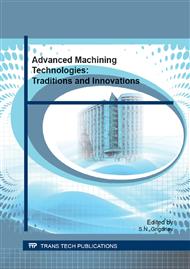[1]
Suárez M., Fernández A., Menéndez J.L., Torrecillas R., Kessel H. U., Hennicke J., Kirchner R., Kessel T. Challenges and Opportunities for Spark Plasma Sintering: A Key Technology for a New Generation of Materials. Sintering Applications (2013).
DOI: 10.5772/53706
Google Scholar
[2]
Orru R., Licheri R., Mario Locci A., Cincotti A., Cao G. Consolidation/synthesis of materials by electric current activated/assisted sintering. Materials Science and Engineering (2009).
DOI: 10.1016/j.mser.2008.09.003
Google Scholar
[3]
Hennicke J, Kessel. H.U. Field Assisted Sintering Technology (FAST, ) for the consolidation of innovative materials. Ber. DKG (2004).
Google Scholar
[4]
Guillon O., Gonzalez-Julian J., Dargatz B., Kessel T., Schierning G., Rathel J., Herrmann M. Field-Assisted Sintering Technology. Spark Plasma Sintering: Mechanisms. Materials, and Technology Developments. Advanced engineering materials (2014).
DOI: 10.1002/adem.201300409
Google Scholar
[5]
Diaz L.A., Montes-Moran M.A., Peretyagin P.Y., Vladimirov Y.G., Okunkova A., Moya J.S., Torrecillas R. Zirconia-Alumina-Nanodiamond composites with gemological properties / L.A. Diaz, M.A. Montes-Moran, P.Y. Peretyagin, Y.G. Vladimirov, A. Okunkova, J.S. Moya, R. Torrecillas. Journal of Nanoparticle Research (2014).
DOI: 10.1007/s11051-014-2257-x
Google Scholar
[6]
McWilliams B., Zavaliangos A., Cho K. C., Dowding R. J. The Modeling of Electric Current Assisted Sintering to Produce Bulk Nanocrystalline Tungsten / B. McWilliams, A. Zavaliangos, K. C. Cho, R. J. Dowding / JOM. 2006, 58, 67–71 p.
DOI: 10.1007/s11837-006-0218-2
Google Scholar
[7]
Anselmi-Tamburini U., Gennari S., Garay J. E., Munir Z. A. Fundamental Investigations on the Spark Plasma Sintering/Synthesis Process - II. Modeling of Current and Temperature Distributions / U. Anselmi-Tamburini, S. Gennari, J. E. Garay, Z. A. Munir / Mat. Sci. Eng. A – Struct. 2005, 394, 139–48 p.
DOI: 10.1016/j.msea.2004.11.019
Google Scholar
[8]
Vanmeensel K., Laptev A. Modelling of the temperature distribution during field assisted sintering. Acta Materialia (2005).
DOI: 10.1016/j.actamat.2005.05.042
Google Scholar
[9]
Tiwari D., Basu B., Biswas K. Simulation of thermal and electric field evolution during spark plasma sintering. Ceramics International. 35 (2009) 699–708.
DOI: 10.1016/j.ceramint.2008.02.013
Google Scholar
[10]
Mol´enat G., Durand L., Galy J., Couret A. Temperature Control in Spark Plasma Sintering: An FEM Approach. Journal of Metallurgy (2010).
DOI: 10.1155/2010/145431
Google Scholar


